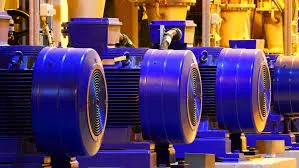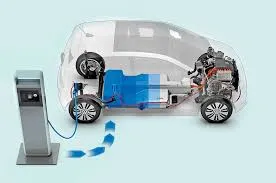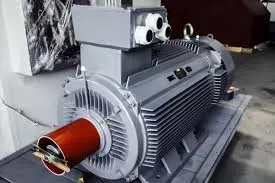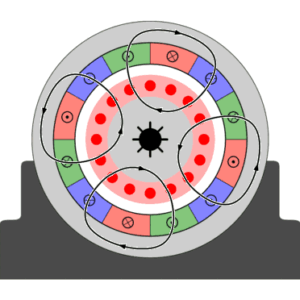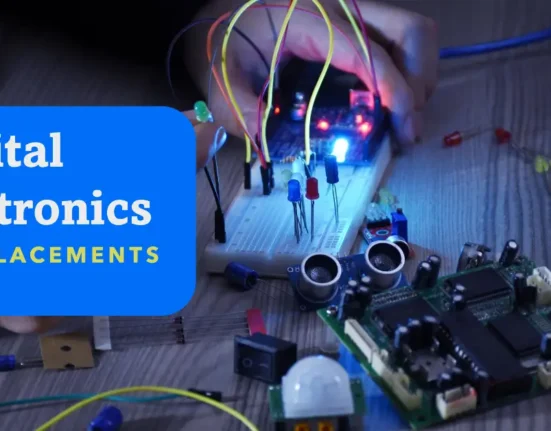This Article will cover these Topics:
(i) A Brief introduction to Induction machines.
(ii) Significance of Induction machine in present scenario.
(iii) Types of Induction Machine and its application.
(iv)Synchronous speed.
(v) Induction Motor and its Types
(vi)Working principle of Induction Motor.
(vii)Advantages and Disadvantages Of Induction Motor.
Brief Overview of Induction Machines
Induction machines, the workhorses of modern engineering, stand at the intersection of electrical and mechanical prowess. Operating on the principles of electromagnetic induction, these machines seamlessly convert electrical energy into mechanical power, driving an array of industrial and commercial applications.
Importance of Induction Machines in Various Industries
The significance of induction machines reverberates across diverse industries, contributing to the core operations of manufacturing, energy production, and beyond. In fact, studies indicate that approximately 90% of manufacturing industries rely on induction motors as the backbone of their machinery, underlining the pervasive role these motors play in sustaining industrial processes. Moreover, the electric vehicle (EV) revolution is powered, quite literally, by induction motors. Around 70% of electric vehicle manufacturers harness the efficiency and reliability of induction motors to propel their vehicles into the future of transportation.
Notably, the global induction motors market is on a trajectory of substantial growth, with an anticipated size of US$ 40.5 billion by 2032. This projection suggests a remarkable compound annual growth rate (CAGR) of 7.4% from 2022 to 2032, as compared to its valuation of around US$ 19.9 billion in 2022.
Table of Contents
ToggleTypes of Induction Machines and its applications:
i)Induction Generator: Induction generators are used in applications such as mini hydro power plants, wind turbines, or in reducing high-pressure gas streams to lower pressure.
ii)Induction Motor: Induction motors are widely used in various industries and applications, such as pumps, fans, compressors, conveyors, cranes, elevators, and more ..
No separate construction in required for induction generator and motor. In an induction generator. Rotor is driven at speed greater than synchronous speed. Curious about synchronous speed?
Synchronous speed:
f= Frequency
Induction Motor:
An induction motor (also known as an asynchronous motor) is a commonly used AC electric motor. In an induction motor, the electric current in the rotor needed to produce torque is obtained via electromagnetic induction from the rotating magnetic field of the stator winding.
Induction motors are referred to as ‘asynchronous motors’ because they operate at a speed less than their synchronous speed.
The induction motor is an electromechanical energy conversion device, i.e. it converts electrical energy into mechanical energy in the form of rotation of shaft. Like any electric motor, an induction motor has two main parts namely stator and rotor.
Induction motor is most widely used induction machine. Let us focus on this particular topic.
Working Principle of Induction Motor
An induction motor operates on the principle of electromagnetic induction. It has two windings: the stator winding and the rotor winding. The stator winding is connected to the input AC supply, which generates a magnetic flux. This magnetic flux rotates and is called the rotating magnetic field. The rotor winding is a short-circuited winding.
The rotating magnetic field from the stator intersects the short-circuited conductors of the rotor winding. As per Faraday’s law of electromagnetic induction, a voltage is induced in the rotor circuit, which causes a current to flow through it. This current produces another magnetic flux in the machine.
Therefore, there are two magnetic fluxes inside the induction motor, one is stator flux and the other is rotor flux. When these two magnetic fluxes interact with each other, the rotor will experience a torque which makes the rotor to rotate in the direction of the rotating magnetic field of the stator. In this way, an induction motor runs.
Types of Induction Motors
Depending on the type of input supply, induction motors are classified into the following two types −
A single-phase induction motor is a type of electric motor that operates on alternating current (AC) with only one phase. Unlike other types of induction motors, a single-phase induction motor does not have a self-starting torque and requires some means of starting, such as a capacitor or a shaded pole. A single-phase induction motor can be used for various applications, such as fans, pumps, blowers, and household appliances.
A three-phase induction motor is a type of electric motor that operates on alternating current (AC) power with three phases. The three-phase AC supply creates a rotating magnetic field in the stator, which induces an electromotive force in the rotor. The rotor then rotates in sync with the stator field, producing mechanical power. Three-phase induction motors are widely used in industrial applications because they are simple, robust, efficient, and self-starting.
Advantages of Induction Motors
The following are some major advantages of induction motors −
Induction motors have simple and rugged construction.
Induction motors are relatively less expensive.
Induction motors have relatively high efficiency.
Induction motors can be designed to meet the industrial requirements.
Induction motors need little maintenance.
Disadvantages of Induction Motors
The main disadvantages of induction motors are as follows −
They have a fixed speed that is hard to adjust motors.
They require a large starting current.
Induction motors always operate at lagging power factor.
Single-phase induction motors are not self-starting; hence we need provide some extra starting mechanism.
Recommended Books :
1.Electrical Machine by Dr. P. S. Bhimbra (Highly Recommended for GATE / IES)
2. Electric Machines by Ashfaq Husain and Harroon Ashfaq
3. Electric Machinery Fundamentals by Stephen Chapman
Some Related articles:


